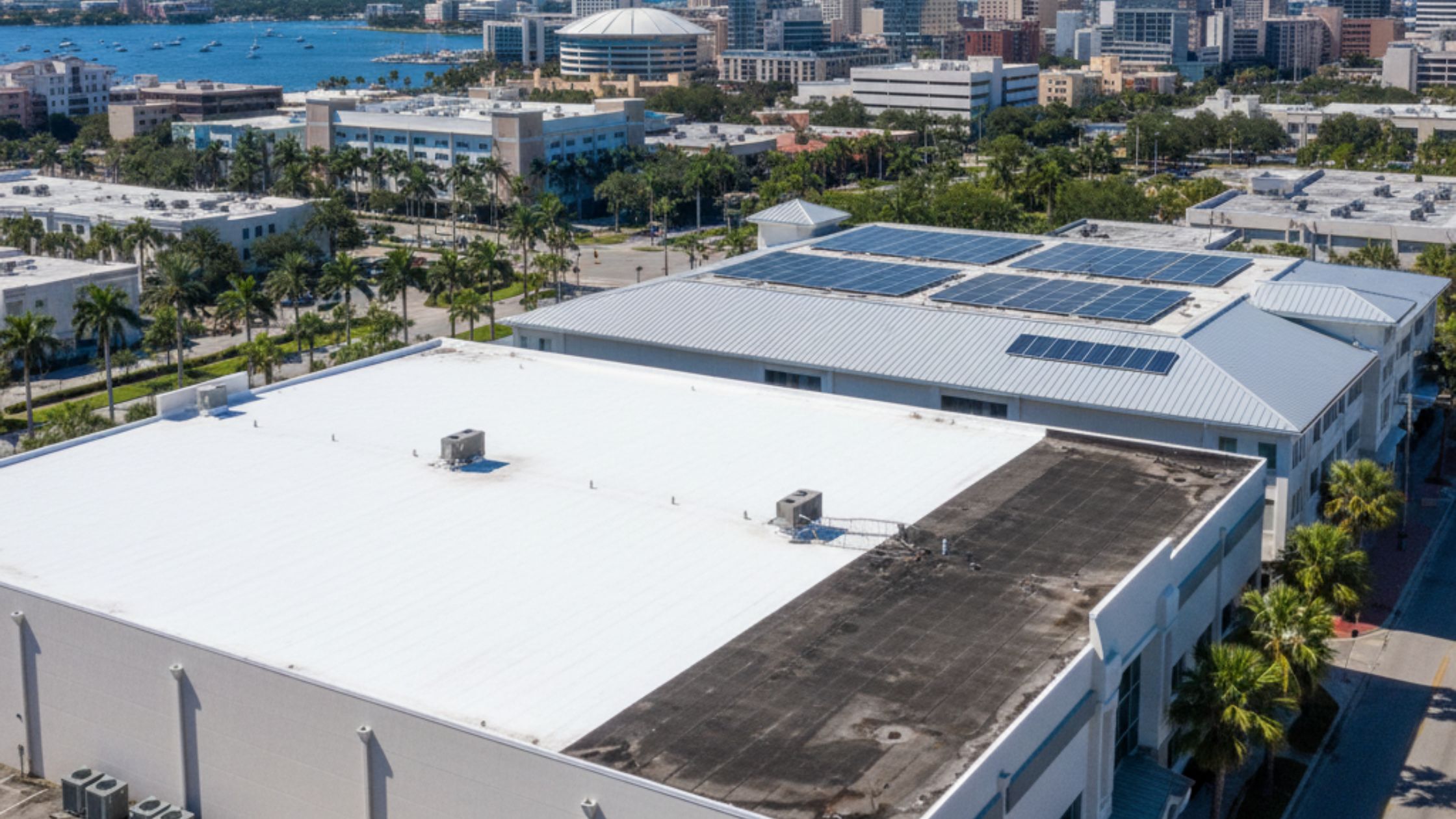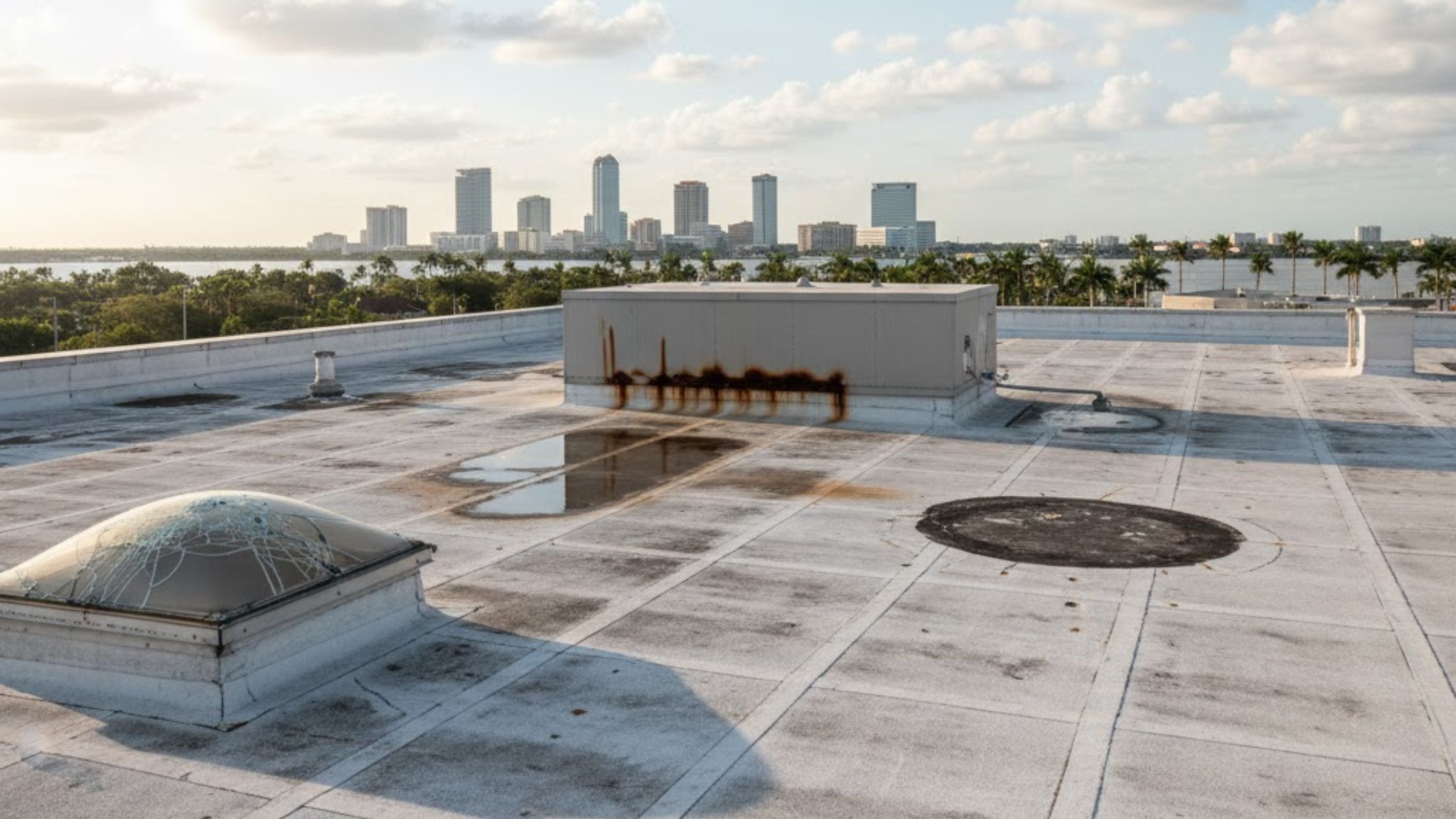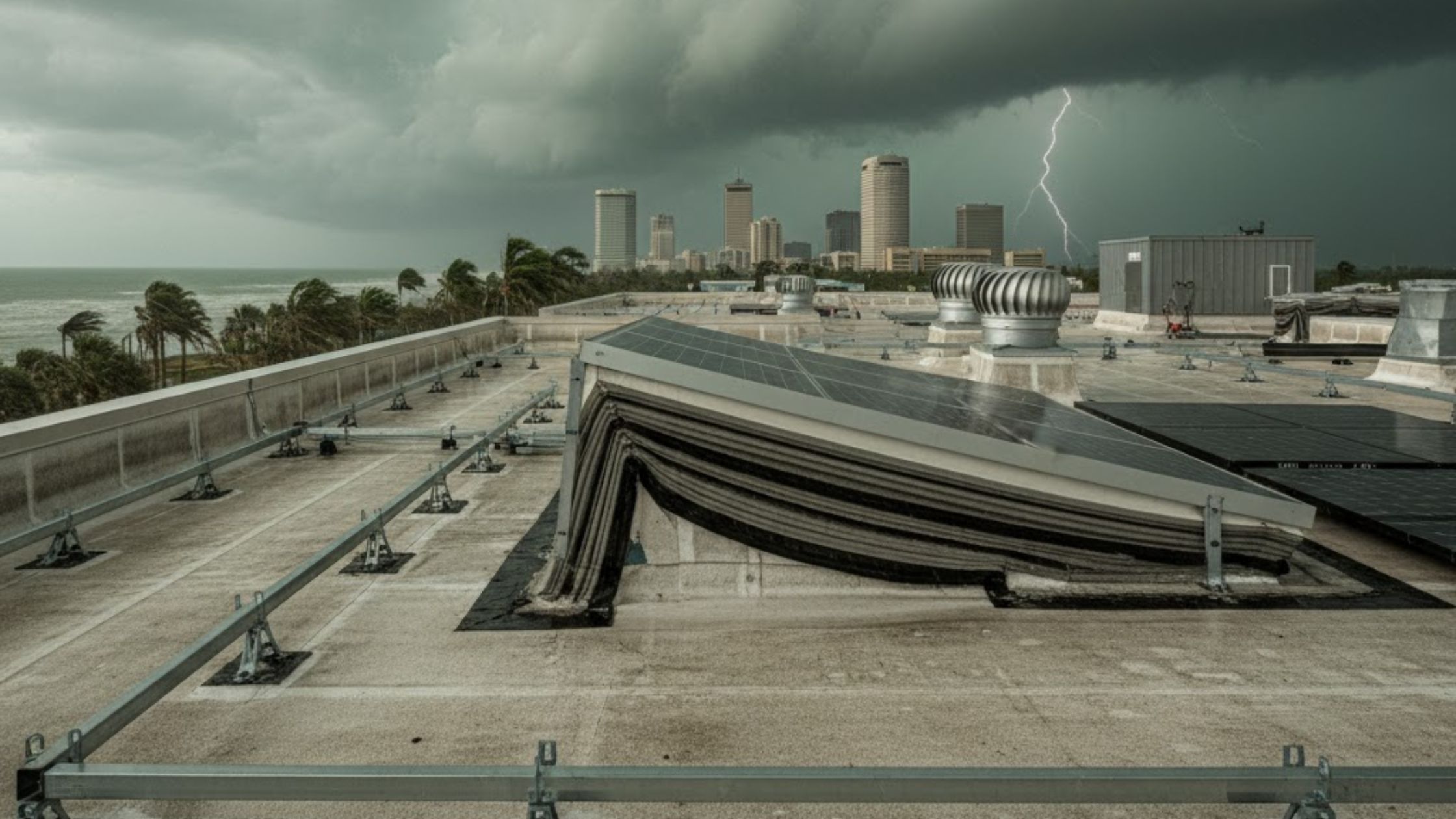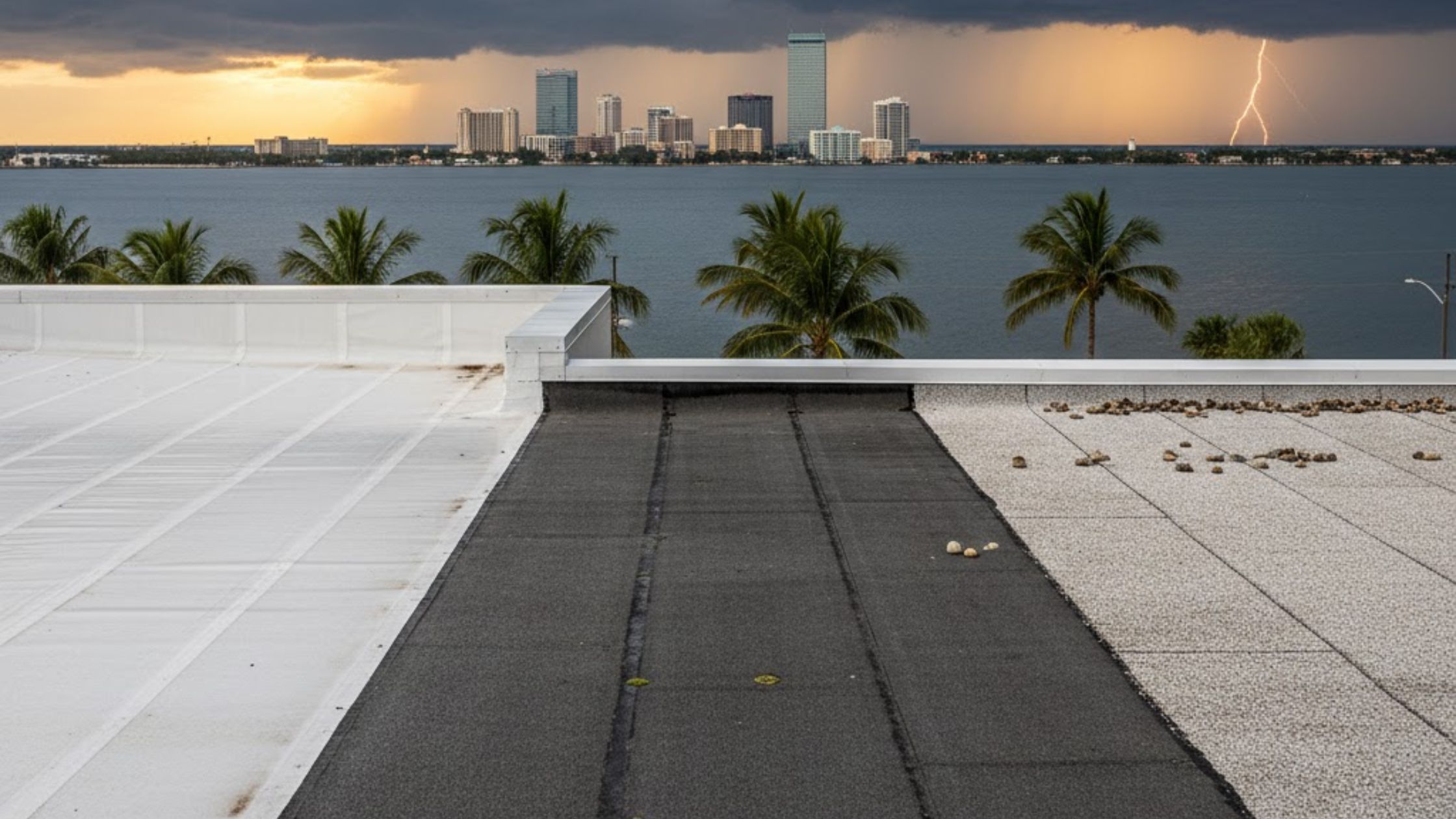How Can Tampa Businesses Reduce Energy Bills with Reflective or Cool Commercial Roofing Systems?
Discover how Tampa businesses lower energy costs with reflective commercial roofing. Improve efficiency, extend roof life & save more with cool roofing solutions.

The unrelenting Florida sun is a major asset to Tampa businesses, illuminating our thriving economy and attracting residents and tourists alike. However, that same intense heat and solar radiation present a significant operational challenge: skyrocketing cooling costs. For any business operating in Hillsborough County, the roof of the commercial building acts as a massive solar collector, absorbing heat and driving up the energy demand for air conditioning systems. This continuous thermal pressure makes finding energy-efficient solutions paramount to maintaining a healthy bottom line. Investing in modern, reflective Commercial Roofing Tampa systems is not merely a maintenance decision; it is a critical strategy for sustainable cost reduction and long-term asset protection in this demanding climate.
For years, property owners were limited to traditional, dark roofing materials that absorbed up to ninety percent of the sun’s heat, turning commercial facilities into internal ovens. Today, thanks to significant advancements in polymer and coating technology, specialized cool roof systems offer a powerful defense against heat absorption. These systems actively reflect solar energy away from the building, translating directly into a dramatically reduced workload for the building’s HVAC units. This shift from passive protection to active thermal management is revolutionizing how property managers in the Tampa Bay area approach asset maintenance and utility cost control.
What are the immediate and long-term benefits of installing a cool roof in Florida's climate?

How exactly does a cool roof work to reduce temperatures and save energy in Tampa?
The fundamental concept behind a cool roof system is surprisingly simple, yet its impact on energy consumption is profound. Unlike conventional black roofs that can reach temperatures exceeding on a sunny day, reflective roofs utilize materials engineered to stay dramatically cooler. By reflecting the sun’s infrared and visible light spectra, a cool roof surface may maintain a temperature that is 50∘F lower than a dark counterpart. This massive reduction in roof surface temperature prevents heat transfer into the building’s interior, which is the direct cause of high cooling loads.
The performance of these systems is measured by two key metrics: Solar Reflectance and Thermal Emittance. Solar Reflectance, often called albedo, is the fraction of solar energy reflected by the roof surface back into the atmosphere. A high solar reflectance rating indicates that the roof is effectively bouncing back the sun’s rays, minimizing the absorption of heat. This reflectivity is the initial, most impactful mechanism for cooling the building structure itself.
The Science of Solar Reflectance and Thermal Emittance
Thermal Emittance is the second critical factor, defining the ability of the roofing material to radiate or emit absorbed heat back out of the building. Even the most reflective surfaces absorb a small amount of heat, and the material's high emissivity ensures that any absorbed thermal energy is quickly released. For cool roof Tampa applications, a roofing system must feature both high solar reflectance and high thermal emittance to provide maximum benefit. This dual-action approach is what delivers consistent, measurable savings throughout the brutal Florida summer.
The combined performance of these two metrics is often summarized by the Solar Reflectance Index (SRI), a common benchmark used by organizations like ENERGY STAR® and LEED. A higher SRI rating signifies a superior cool roofing product, translating directly into better thermal performance and greater reductions in internal cooling requirements. When selecting materials, commercial property owners should always prioritize products with a high SRI suitable for the warm climate zone of Tampa.
Mitigating the Urban Heat Island Effect
Beyond the financial savings realized by individual businesses, cool roofing systems contribute significantly to broader environmental sustainability efforts. Tampa, like many major metropolitan areas, experiences the Urban Heat Island Effect, where concrete and dark surfaces absorb and re-radiate heat, making the city notably warmer than surrounding rural areas. When many commercial properties switch to reflective roofing, they help counteract this localized phenomenon.
The collective reflectivity of white or light-colored roofs lowers the ambient air temperature across the city, reducing the overall demand on the local power grid. This decrease in regional electricity consumption not only saves money but also reduces the burning of fossil fuels, thereby lowering greenhouse gas emissions. For any Tampa business prioritizing a reduced carbon footprint and corporate social responsibility, the environmental advantages of cool roofing are compelling and easily quantifiable.
Reflective Roofing Systems: Materials Built for Florida's Intense Sun
Selecting the appropriate commercial roofing system involves balancing upfront investment costs, expected longevity, durability, and, crucially, energy performance metrics. The Tampa Bay area’s unique environmental challenges—high UV index, intense humidity, and periodic severe weather—demand robust materials specifically designed for this climate. Fortunately, the market now offers several highly effective, energy-efficient solutions tailored for commercial, low-slope applications.
The shift toward energy-efficient commercial roofing has been driven primarily by the success and proliferation of single-ply membranes. These flexible sheets of roofing material are factory-manufactured for consistent quality and are installed in large panels, minimizing seams and potential leak points. Their white or light-colored surfaces are intentionally chosen to maximize solar reflectance and ensure peak energy savings.
Single-Ply Powerhouses: TPO and PVC
Thermoplastic Polyolefin, or TPO, has rapidly become the dominant choice for modern commercial roofing due to its outstanding combination of performance and value. TPO membranes are naturally white and highly reflective, offering excellent defense against UV radiation and heat buildup. A major advantage of TPO is its installation method, which uses hot-air welding to create incredibly strong, seamless seals at the laps and penetration points. This superior seam strength ensures a watertight seal that is critical for managing Florida’s frequent heavy rainfall.
Polyvinyl Chloride, or PVC, is another popular single-ply membrane that shares TPO’s reflective benefits but excels in areas exposed to harsh chemicals. For businesses like restaurants, food processing plants, or manufacturing facilities where grease, oils, or chemical exhausts are common on the rooftop, PVC offers superior chemical resistance and durability. While TPO is often the most cost-effective choice, PVC provides enhanced protection where specific environmental exposures exist.
Fluid-Applied Coatings: Restoration and Performance
For building owners seeking to achieve the benefits of a cool roof without the significant expense and disruption of a full tear-off and replacement, fluid-applied roof coatings are an ideal solution. These restorative systems, typically made from acrylic, silicone, or polyurethane, are applied directly over existing roofing materials, such as modified bitumen or metal. The coatings form a seamless, highly reflective membrane that waterproofs and renews the roof surface.
Silicone coatings are highly favored in Florida because of their excellent waterproofing qualities and resistance to ponding water, a common issue on low-slope roofs. Acrylic coatings offer a very high initial solar reflectance and are cost-effective, though they may require more frequent maintenance compared to silicone. Polyurethane coatings provide exceptional resistance to impact and heavy foot traffic, making them suitable for roofs with extensive rooftop equipment or high maintenance activity.
The Role of Metal and Modified Bitumen
While flat roofs often benefit most from single-ply systems, metal roofing is also a highly effective energy-efficient option for commercial properties with steeper slopes. Modern standing seam metal roofs can be finished with specialized, high-performance reflective paints containing pigments that reflect infrared light even in darker colors. This allows property owners to select a non-white color without sacrificing much of the essential solar reflection, providing aesthetic flexibility alongside energy benefits.
Traditional Modified Bitumen and Built-Up Roofing (BUR) systems, which were historically dark and heat-absorbing, can now be easily upgraded to cool roofs. This is achieved by using white, reflective mineral-surfaced cap sheets or by applying thick, reflective field coatings as a final layer. This adaptability means that many existing commercial roofs in the region are prime candidates for a simple, restorative cool roof coating application.
Securing a high-performing and long-lasting reflective roof starts with selecting a local contractor who specializes in the rigorous demands of the regional climate. Working with an experienced local firm ensures that the chosen materials meet local building codes and are proven to withstand Tampa’s intense heat and humidity. If you are beginning the process of evaluating your current system and exploring modern, reflective options, look no further than finding experts in Commercial Roofing Tampa who understand the unique structural and climatic needs of the area.
The Financial Case for Energy-Efficient Commercial Roofing Tampa

The decision to upgrade to an energy-efficient roofing system, while involving an initial capital expenditure, is best viewed as a strategic financial investment rather than a maintenance expense. The return on investment (ROI) for switching to a cool roof in a high-heat market like Tampa is often rapid and substantial, driven primarily by recurring utility cost savings and the extended lifespan of the physical assets.
Energy-efficient Commercial Roofing Tampa systems dramatically reduce the building's thermal load, which is the amount of heat energy the HVAC system must remove from the indoor environment. This reduction means air conditioning units run less frequently and less intensely, leading to a significant decrease in electricity consumption and, subsequently, a lower utility bill. Businesses with large, flat roofs exposed to direct sunlight often see the most dramatic financial benefits, often realizing savings between $0.10 and $0.30 per square foot annually.
Quantifying Energy Bill Reductions
Typical estimates suggest that commercial buildings in Florida can experience anywhere from a 15% to 30% reduction in peak-hour cooling costs after installing a highly reflective roof. This percentage may increase even further when the reflective membrane is paired with an insulation upgrade. For a large warehouse or office park, these percentages translate into thousands of dollars in annual savings, effectively turning the roof into a passive income generator. The substantial reduction in energy use also helps shield businesses from fluctuating energy prices and seasonal demand charges imposed by local providers like Tampa Electric.
Lowering the cooling load has a secondary but equally valuable financial benefit: preserving the building’s HVAC equipment. When the air conditioning system is constantly battling intense heat radiating down from a dark roof, its components wear out faster, requiring more frequent maintenance and premature replacement. A cooler attic and duct system allow the HVAC unit to cycle normally and efficiently, significantly extending the operational lifespan of expensive mechanical equipment and saving thousands in replacement capital years down the line.
Extending Roof Lifespan
Traditional, dark roofing materials suffer from constant thermal cycling—the dramatic temperature swing between the hot midday sun and the cooler night air. This process causes materials to continuously expand and contract, placing tremendous stress on seams, flashing, and membrane integrity, leading to premature cracking and failure. Cool roofs dramatically mitigate thermal cycling by maintaining a far more stable, lower surface temperature throughout the day.
By reducing the severity of temperature swings, a reflective roof preserves the material’s elasticity and structural integrity, often extending the system’s expected service life by several years. This reduction in physical stress means fewer leak repairs, less preventative maintenance required, and a delayed need for a costly full roof replacement. The longevity factor alone often solidifies the cool roof's advantage when calculating the true life-cycle cost of a commercial roofing system.
Maximizing ROI through Rebates and Incentives
To encourage the adoption of sustainable infrastructure, various state and local programs offer financial incentives that significantly improve the ROI of cool roofing. Tampa Electric (TECO) regularly offers custom energy efficiency rebates to commercial and industrial customers who implement peak-demand-shifting or energy conservation measures, for which cool roofs often qualify. These incentives help offset the initial installation cost, making the project cash-flow positive much sooner.
Beyond utility incentives, Florida businesses may explore innovative financing structures designed specifically for energy efficiency upgrades. Programs like the Property Assessed Clean Energy (PACE) program allow property owners in participating counties (including Hillsborough and Pinellas) to fund energy-saving improvements like cool roofs through a property tax assessment. This type of structure can minimize or eliminate the initial out-of-pocket costs, making energy upgrades immediately accessible. If you require specialized assistance in navigating these capital requirements, investigating a financing option that works with your specific business budget is a crucial early step.
Navigating Local Compliance and Roofing Standards in Hillsborough County
Operating a commercial property in the Tampa Bay area requires strict adherence to the Florida Building Code, particularly the highly detailed Energy Conservation section. For new construction and major renovations, the code dictates minimum performance standards for building envelopes, including roofing systems. Property owners must ensure that any chosen roofing material meets or exceeds the required prescriptive values for reflectivity and insulation to receive final inspection approval.
The Florida Energy Code, updated regularly to promote greater energy efficiency, often requires specific R-values (thermal resistance) for insulation depending on the climate zone and the type of construction. Simply installing a reflective membrane may not be enough; the entire roof assembly, including the insulation layer, must work together to achieve optimal thermal performance. This is why a thorough roof assessment by a qualified Commercial Roofing Tampa specialist is always the first action item.
Florida Energy Code Requirements
Compliance with the Florida Energy Code means paying close attention to the R-value of the insulation used beneath the cool roof membrane. Insulation materials like Polyisocyanurate (PolyISO), Expanded Polystyrene (EPS), and Extruded Polystyrene (XPS) play a crucial role in preventing conductive heat transfer, complementing the reflective material's role in preventing solar absorption. PolyISO is a very popular choice in commercial applications due to its high R-value per inch of thickness and its ease of application on low-slope decks.
A major consideration in low-slope roofing systems is managing water drainage effectively to avoid standing or "ponding" water. The Florida Energy Code and general roofing best practices mandate positive drainage to protect the roof membrane and structure. Tapered insulation systems are commonly used to achieve the necessary slope, directing water toward drains or perimeter edges. This not only prevents leaks but also ensures the membrane is not submerged, which could temporarily compromise the cool roof's emissivity and reflectance.
Importance of Tapered Insulation and R-Value
Tapered insulation consists of factory-cut panels designed to create a custom slope on a flat deck. While it adds to the complexity and material cost of the project, it is a non-negotiable step for long-term roof health in the high rainfall environment of Florida. Furthermore, increasing the R-value of the insulation—going above the minimum code requirement—is often one of the quickest ways to accelerate the ROI, as enhanced insulation means significantly lower year-round heating and cooling expenses.
When planning a commercial roof replacement, property owners should work closely with their roofing contractor and potentially an energy auditor to model the optimal R-value needed for their specific building type. A distribution warehouse, for example, may have different needs than a climate-controlled medical facility or an office building. Customizing the insulation plan based on building use and thermal modeling ensures the maximum energy benefit for the capital invested.
Choosing the Right Contractor and Warranty
The success of any cool roofing system—be it TPO, PVC, or a restorative coating—rests entirely on the quality of its installation. Unlike standard shingle work, commercial cool roofing often involves specialized heat-welding equipment, precise flashing details around penetrations (like vents and HVAC units), and meticulous surface preparation for coatings. Poor installation can compromise the system's reflectivity, its watertight integrity, and its overall lifespan.
It is paramount to select a certified, local commercial roofing specialist with a track record of successful installations in the Tampa market. An established contractor can provide manufacturer-backed warranty options that cover both materials and labor for many years, offering peace of mind. They will also be experienced in navigating the local permitting and inspection processes in Hillsborough County, ensuring all work complies with the stringent Florida Energy Code.
Beyond Savings: Improving Occupant Comfort and Business Productivity
While the financial metrics of reduced energy consumption are highly compelling, the non-monetary benefits of reflective commercial roofing often hold equal, if not greater, value for property owners and tenants. A cooler, thermally stable building directly impacts the quality of the working environment, which translates into quantifiable improvements in employee productivity, tenant satisfaction, and product storage integrity.
In many commercial spaces, especially those with large, open floor plans or high ceilings, the oppressive heat radiating from a dark roof can create inconsistent, uncomfortable indoor temperatures. Employees working near the top floor or near skylights may experience "hot spots," leading to fatigue, reduced concentration, and even health complaints. A reflective roofing energy savings system eliminates this radiant heat source, allowing the internal air temperature to be maintained more uniformly and effectively.
Stabilizing Indoor Temperatures
The removal of solar heat gain at the roof level means that the building’s interior is far less susceptible to external temperature fluctuations. This thermal stability ensures that the HVAC system can maintain the thermostat setting with greater ease and less variance, creating a consistent and comfortable working environment. For businesses that rely on temperature-sensitive inventory—such as grocery stores, electronics warehouses, or pharmaceutical facilities—this stable internal climate is crucial for preventing spoilage and protecting valuable assets.
The effect of a cooler roof also extends to the structural components of the building itself. Reduced temperatures in the plenum space and attic mitigate the stress on internal components like wiring, ductwork, and ceiling materials. This preventative care reduces the need for repairs to interior systems and maintains the overall structural integrity of the facility for decades to come, ensuring the commercial space remains pristine and professional for tenants and visitors.
Addressing Specific Commercial Needs
The choice of reflective roofing can be tailored to the specific functional demands of the commercial facility. For example, hospitals, data centers, and telecommunication hubs require absolute thermal consistency and are often willing to invest in premium single-ply systems like PVC or high-specification TPO to ensure minimal thermal interference with sensitive equipment. These environments prioritize durability and chemical resistance to protect critical rooftop air handlers and exhaust systems.
Conversely, big-box retail centers or high-volume storage facilities, while also valuing energy savings, may prioritize high impact resistance due to frequent roof traffic and the movement of heavy machinery. They might opt for reinforced TPO membranes or thicker polyurethane coatings designed to withstand heavy use without compromising the reflective performance. Custom solutions are the hallmark of effective energy-efficient commercial roofing and should always be part of the initial consultation phase.
Once the scope of the project and the potential energy savings have been identified, the next step is connecting with a trusted local roofing team. This team will provide a transparent proposal outlining the costs, the projected ROI, and the installation timeline, ensuring minimal disruption to your daily operations. To take that important step toward maximizing your building’s efficiency and securing its long-term health, reaching out to contact us directly is the best way to move forward.
Frequently Asked Questions About Cool Roofing in the Tampa Bay Area
Cool roofing is a proven technology, but commercial property owners often have specific questions regarding long-term performance, maintenance, and regional suitability. These five frequently asked questions (FAQs) address common concerns for businesses in the Tampa Bay area.
1. Does a white roof get dirty easily, and will that dirt affect its energy performance?
Yes, all roofs accumulate dirt, dust, and biological growth over time, and this buildup can slightly reduce the initial solar reflectivity of any cool roof. However, the effect on thermal performance is usually minimal compared to a dark roof. TPO and PVC membranes are designed to be low-maintenance and easily cleaned with standard commercial roof cleaning procedures. Periodic, professional cleaning every few years is sufficient to maintain high reflectivity and ensure optimal energy savings.
2. How much energy can I truly expect to save on cooling costs?
While savings vary widely based on the building’s size, existing insulation, HVAC efficiency, and internal temperature set points, most Tampa commercial buildings with flat, sun-exposed roofs can expect a 15% to 30% reduction in air conditioning energy usage during peak summer months. In some cases, where the original roof was severely degraded and dark, the savings can be even more substantial, leading to a payback period of just a few years.
3. Is TPO roofing strong enough to handle Florida's severe weather, like tropical storms?
Absolutely. TPO is one of the most durable commercial roofing systems available, known for its resistance to tears, punctures, and UV degradation. When properly installed by certified professionals using hot-air welded seams, TPO systems are rated for high wind uplift. Their installation process must meet or exceed the rigorous wind-load requirements established by the Florida Building Code, ensuring they can withstand typical tropical storm conditions.
4. Are there any drawbacks to installing a reflective roof in the winter?
In the Tampa climate, which is categorized as a warm, humid zone, any potential heating penalty during the mild winter months is overwhelmingly offset by the substantial cooling savings achieved during the long, hot summers. The net annual energy savings are positive and significant. Furthermore, the excellent insulation typically paired with a cool roof helps retain any generated heat efficiently on the few days heating is required.
5. What is the typical lifespan of a high-quality cool roof system in Florida?
The lifespan depends on the specific material chosen, the membrane thickness, the quality of installation, and routine maintenance. A high-quality, professionally installed TPO or PVC membrane is expected to last 20 to 30 years or more. Restorative silicone or acrylic coatings can extend the life of an existing system by 10 to 15 years, providing an extremely cost-effective method to gain immediate reflective benefits and longevity.
Conclusion: Securing Your Business Future with Reflective Roofing
The intense solar exposure and high energy costs characteristic of the Tampa commercial market demand a proactive approach to building envelope management. The decision to move forward with a cool or reflective roofing system represents one of the most impactful operational and environmental investments a commercial property owner can make. These advanced systems deliver clear, measurable financial savings through reduced HVAC strain and extended equipment life, while simultaneously offering the crucial benefit of a more comfortable and productive internal environment for employees and tenants.
For any business searching for a definitive solution to perpetually high utility bills and aging infrastructure, modern Commercial Roofing Tampa systems provide a resilient, long-term answer. The technology is proven, the incentives are available, and the financial payback is accelerated in this high-heat climate. When you are ready to evaluate your commercial facility and take the next step toward energy independence and sustainability, trust the local specialists who understand the unique demands of Florida construction. We are committed to delivering the highest standards of installation and service, ensuring your reflective roofing system performs optimally for decades to come. That is the commitment you receive when partnering with CB Roofing Solutions.
About CB Roofing Solutions
We specialize in high-performance, energy-efficient commercial roofing systems tailored specifically for the Tampa Bay climate. Our expertise spans all modern reflective options, including TPO, PVC, and fluid-applied coatings, ensuring we provide a cost-effective, durable, and highly efficient solution for every type of commercial property.
If you are prepared to reduce your operating costs, protect your assets, and future-proof your building against Florida’s extreme heat, we invite you to explore a partnership that delivers uncompromising quality and long-term value. Contact us today to schedule a comprehensive roof assessment and receive a detailed, no-obligation estimate for your energy-saving upgrade.



